Words and Photos from “No Spring Chicken,” Michael DeYoung (New trail name: Second Chance)
My first real life-changing event was a two-week backpack trip to Philmont Scout Ranch in New Mexico in 1977. That inaugural trip for this Eagle Scout from Florida set me on a lifetime course of backcountry adventure that continues to this day in my sixties. Like many sixteen-year-old myopic boys, I believed that because my parents and friends' parents were not in any shape to do the kind of hiking we did, anyone over forty was in the same category. A few of us were concerned about our forty-five-year-old scoutmaster being too old to keep up with us strapping boys on a 14-day hike through the Sangre de Cristo Mountains. We teased him about being hauled out on a stretcher by day two. Well, if you got ahead of me, you can pretty much guess that's not what happened.
Instead of our scoutmaster being hauled off on any day, he ran us little turds into the ground finding comic relief at our expense every step of the way. We were the ones complaining about being sore, tired, thirsty, walking too far, and being unable to carry a pack any further. He easily beat all of us on the most grueling hike, summiting the 12K+ Mount Baldy. I remember a few times being called names I wouldn't hear again until years later by my drill instructor in basic training, names that might result in parental lawsuits today. Back then, that level of humiliation was still widely accepted as "character building." To this day, the biggest piece of humble pie I've ever had to choke on took place on that trip. Lesson learned: Age was no barrier to physical endurance as demonstrated by our retired Green Beret scoutmaster.
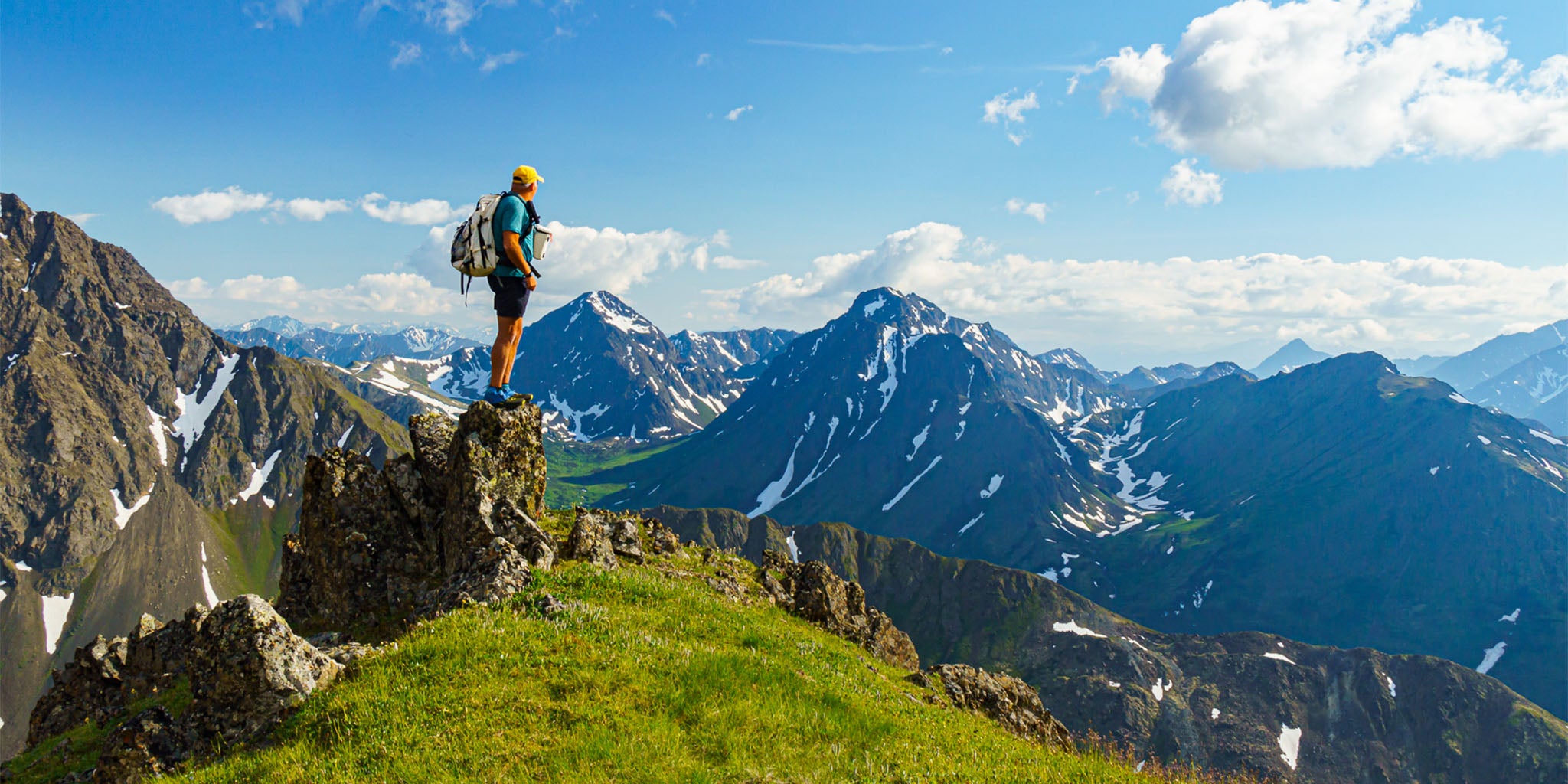
Is there an upper age limit to self-supported and physically demanding wilderness trips? We all know there is no one-size-fits-all answer to that. It depends on the person, their level of fitness, genetics, experience, and judgment. If all the previously mentioned factors are in your favor, gear choice can make a difference in extending your wilderness years. It certainly did for us. Thanks to many advances in outdoor equipment over the decades, many good choices of light gear are available today that don't sacrifice performance or durability.
Back to Philmont. I'm not sure when ultralight became an official thing, but even then, the mindset was to go as light as possible. Backpacking was an art where you only took what was necessary. Options were limited compared to today, and packs were still heavy. We used nylon tents and aluminum poles vs. canvas tents and wood poles. A two-person tent in 1977 that was only five pounds was a luxury. We had down jackets and sleeping bags, but not the 900+ quality fill we have today. We used aluminum vs. steel mess kits. Our packs were external frames and heavy-duty nylon, but still two times heavier than high-end packs today. We used dehydrated food, which helped, but it wasn't as light as modern freeze-dried fare. And the conventional wisdom on footwear for all hiking was Austrian waffle stompers–heavy leather boots with a sewn-in, not glued, sole that took a year of blisters to break in but lasted forever with regular saddle soap cleanings.

Awareness of going as light as possible on adventures stayed with me but putting it into practice slipped over the years. Lauri, my wife of thirty-four years and adventure partner for forty, and I did a fair amount of backpacking in our twenties while dating. Thinking we were kinda sorta going state-of-the-art light, forty-pound packs for a seven-day backpack trip in the Rockies was not a heavy lift for strapping twenty-something mountain goats. Weeklong adventures took us to the San Juan Mountains of Colorado and the Northern Rockies of Montana.
Moving to Alaska, becoming a professional photographer, and embracing wilderness river trips put the curse on being ultra-light. Even on summer trips in the Arctic, four-season tents, dry suits, more warm layers, and extra food were necessary items. What Alaska lacks in hiking trails, it more than makes up for in navigable rivers. The north slopes of the Brooks Range offer world-class hiking in any direction. River tripping allowed us to combine our biggest passions into one trip: river paddling with moderate whitewater, mountain hiking, and photography. The boats allowed us to carry more luxury items than feasible on a backpacking trip, but that came at a cost. The more you carried, the more it cost, as you needed bigger planes to carry your load into the wilderness. In some cases, portages from a float plane drop off lake to the river became a gruesome chore.

As I look back, it's hard to believe we took close to four hundred pounds of gear and food–including a Pak canoe and forty pounds of camera gear–on an Alaska Airlines flight from Anchorage to Kotzebue, a remote native village above the Arctic Circle on Alaska's Northwest Coast. We also somehow expected to put ourselves and all that gear on a Cessna 206 for a two-and-a-half hour flight into the headwaters of the Noatak River in Gates of the Arctic National Park. That was 1997, and to date, our longest wilderness river trip at four hundred miles and twenty-eight days. We ended up doing it in twenty one. We were overloaded for the bush flight, and the air taxi service in Kotzebue forced us to leave a hundred pounds of gear behind or charter an unaffordable second flight. We did fine without the extra hundred pounds of extra food and equipment and began to wonder why we packed so much. I do remember discussions about how we would continue to do this later in life with all the gear we carry.
A pivotal event and opportunity of a lifetime occurred in the winter of 2001 when I oared a raft down the Colorado River through the Grand Canyon on a private river trip. As much as we love the Grand Canyon, the traditional-style raft trip was just too much for me. It was too similar to traveling with a mechanized division that I had to do while assigned to Army Posts on active duty. Our loaded raft weighed a ton, and I felt like I was oaring an unresponsive barge instead of a playful, nimble craft. We spent six hours every day doing nothing but unloading, setting up elaborate camps, and doing it all in reverse the next day. A river trip through the Grand is epic, but this just wasn't my style.
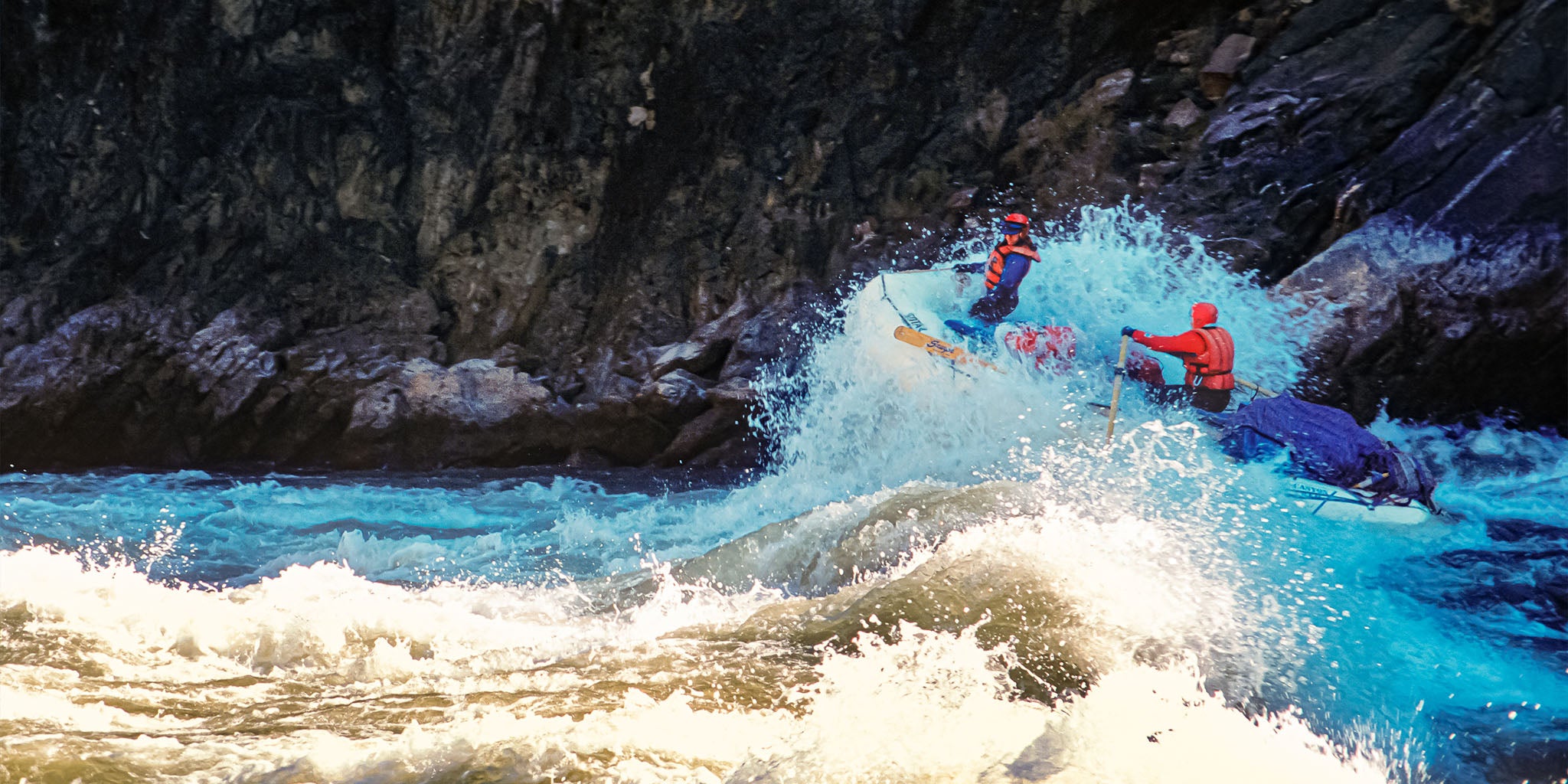
Since then, we have undertaken seventeen multi-day backpack trips in the Grand Canyon. That first river trip and early backpack trips in the Grand were the straws that broke the camel's back. I really wanted to make serious efforts to lighten up. My Achilles heel was needing to carry a DSLR camera and quality lens with me. Having publishable images was critical. After all, that's what I did for a living, and we've made some decent sales from our Grand Canyon adventures. Unfortunately, there is no way to make glass lighter. More on camera gear down below.

Packrafting alone has revolutionized how we river trip and opened up endless possibilities to paddle rivers not accessible with traditional gear. We watched the sport's origins and evolution as it took place near our hometown of Eagle River, Alaska. Now, packrafting has global reach and enthusiasm as it continues to grow. It dovetails nicely with other forms of light and mobile wilderness tripping–from backpacking to bikepacking and canyoneering. Packrafting forces you to think and pack backpacking style. Our latest Arctic river trip, a ten-day descent of the Marsh Fork and Canning Rivers in the Arctic National Wildlife Refuge in 2021, was night and day from our early and heavier canoe trips in the Alaska Arctic, the Northern Yukon, and Northwest Territories. We still took a four-season tent (HMG Ultamid-bomb proof in strong winds-personally tested in the Washington Cascades and Alaska Arctic), our HMG Porter packs, winter layers, and bear barrels, but our load was less than half of what it used to be, resulting in significant savings on air taxi.

Our second private river trip through the Grand Canyon was last November–twenty years later, and I finally got to do it my way with immense satisfaction. We had an all-packraft crew of six. We only did the first ninety miles and hiked out at Phantom Ranch with all our stuff. The hike out was brutal but so worth it. That was a much more enjoyable trip than my first twenty-nine-day trip in a heavily loaded raft.
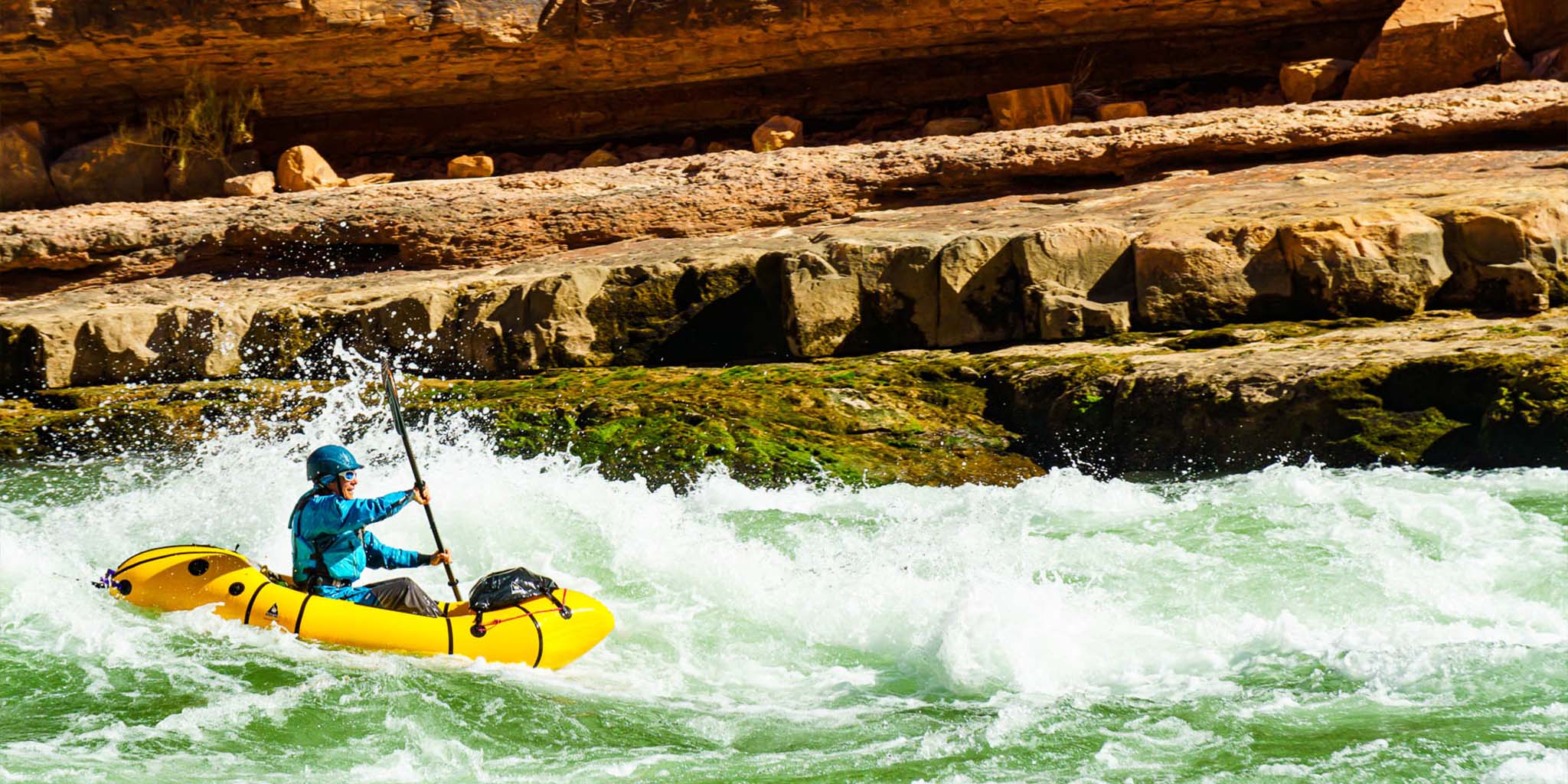
A wave of ultralight wisdom and transformation toward lightening up again all came together in 2016. At age fifty five, we were planning long section hikes on the Pacific Crest Trail that summer, and I knew the only way to accomplish this was to take another hard look at essentialism. A huge game changer for me was finally discovering that smaller mirrorless cameras and smaller lenses had come of age. I was able to reduce my basic camera outfit of six pounds that I carried on multiple Grand Canyon backpack trips to less than three–without any sacrifice in image quality.

This was when I discovered a whole cottage industry of hiking/backpacking gear and apparel not easily found at REI. For the first time, I really began to dig into online blogs vs. just reading the few paper guidebooks I could find. These amazing discoveries resulted in an exponential step toward lightening up.
It's easy to understand why many "seasoned" veterans like myself would resist modernizing and lightening up their gear. Why would I spend money on the latest and greatest when I paid top dollar for performance gear twenty-five years ago that STILL works? We are set in our ways and want to stay in our comfort zone. Just remember, adapting and lightening up means new and improved comfort zones await you.
MICHAEL'S TOP REASONS FOR GOING ULTRALIGHT AS AN OLDER HIKER

GEAR IS BETTER TODAY
It's that simple. Take advantage of all the design and innovation from some truly committed folk that have gone into making hiking, backpacking, packrafting, and other adventure sports more enjoyable. Sore muscles and pushing through bad weather are par for the course. No need to suffer from old gear that's too heavy.
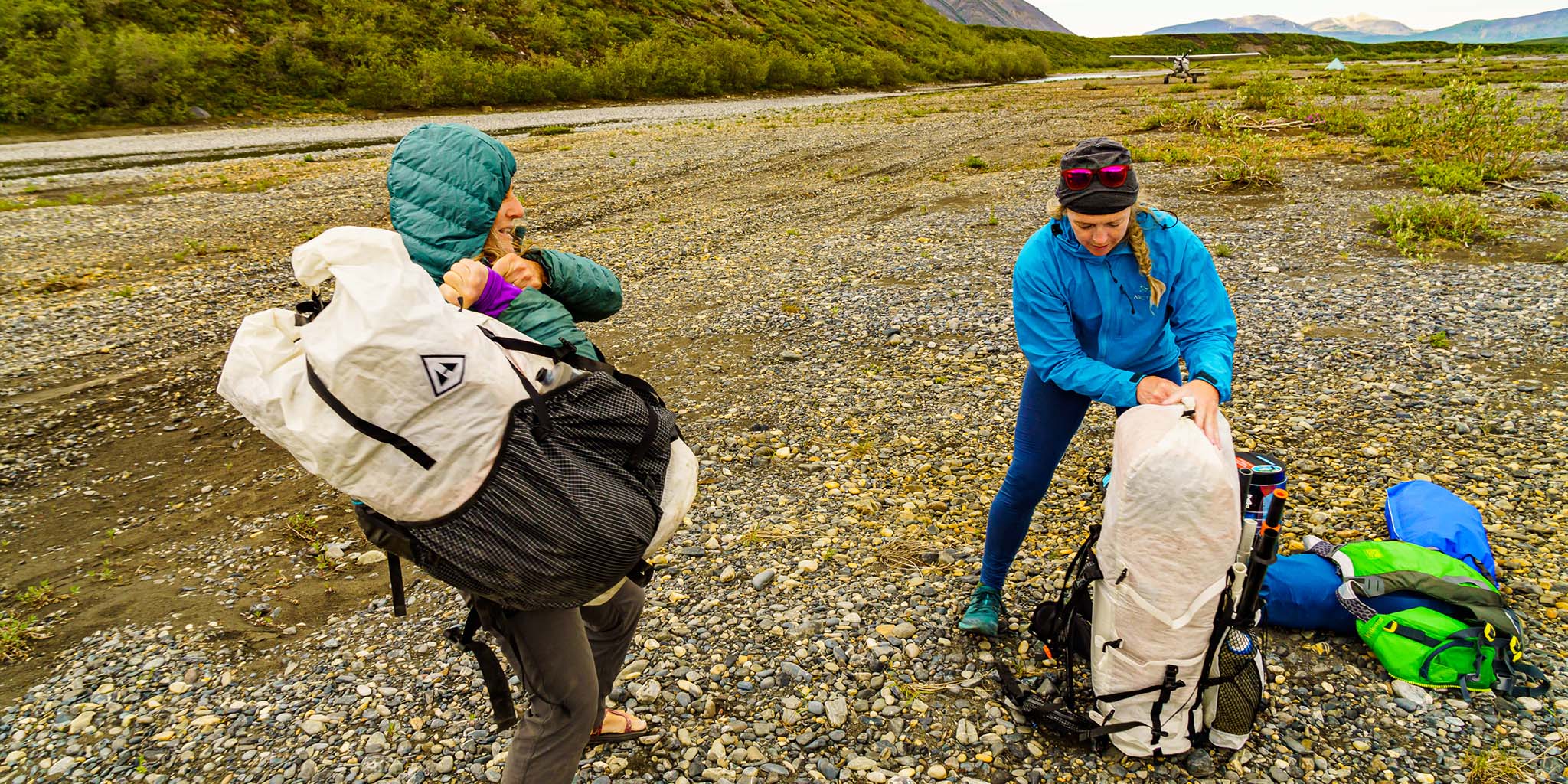
SAVING EVEN A FEW POUNDS REALLY MAKES A DIFFERENCE
Your muscles may be toned, and you may have the lungs of a 30-year old but let's face it, with decades of trail poundings, you are probably missing some cartilage somewhere. Even shaving five pounds at the start of a long trip can be a lot easier on the knees. It's really easy to focus on five big items to lighten your load. My HMG packs are half of what I used to carry, two pounds vs. four, and just as functional and comfortable with a 25-30 pound load. With a light weatherproof pack and stuff sacks for critical items like clothes and a sleeping bag, you don't need a pack cover anymore. Sturdy tents are in the two-pound range now, and quilts rated at 20 degrees weigh even less. I remember when a three-pound sleeping bag was considered light. Unless you are pioneering new Via Ferrata routes or traversing the Grand Canyon off-trail, ditch the heavy hiking boots and get into trail runners. They are really all you need for most trails. Yes, they can wear out quickly. Get a new pair and keep going. Can't tell you how liberating that alone was. And finally, Smart Water bottles are more durable than you think. They last for years and weigh a fraction of what a Nalgene bottle weighs.

YOU WILL LOOK COOL ON THE TRAIL
How can anything be more important than that? You can be one of the cool kids. Gen Z'ers might even want to talk to you and hear your stories of harrowing trail adventures from "back in the day" when you had ninety-pound packs. No need to be a walking museum with grey hair on the trail. If you want to hold on to a relic of the past without any weight penalty, you can still sport a classic bandana with the same hideous colors and patterns that haven't changed since Woodstock. But you can up your coolness by going with a Buff instead. Nobody sews patches from everywhere they've been on their packs anymore. That went away with tube socks and bean bag chairs. Stickers are the in thing today. And by all means, before you set out with your all-new UL gear, roll your pack in the dirt a little and cake some mud on your new trail runners. Nothing looks tackier than someone bombing down the trail with a bunch of new gear that looks like it was removed from factory packaging an hour ago at the trailhead with a price tag they forgot to remove.
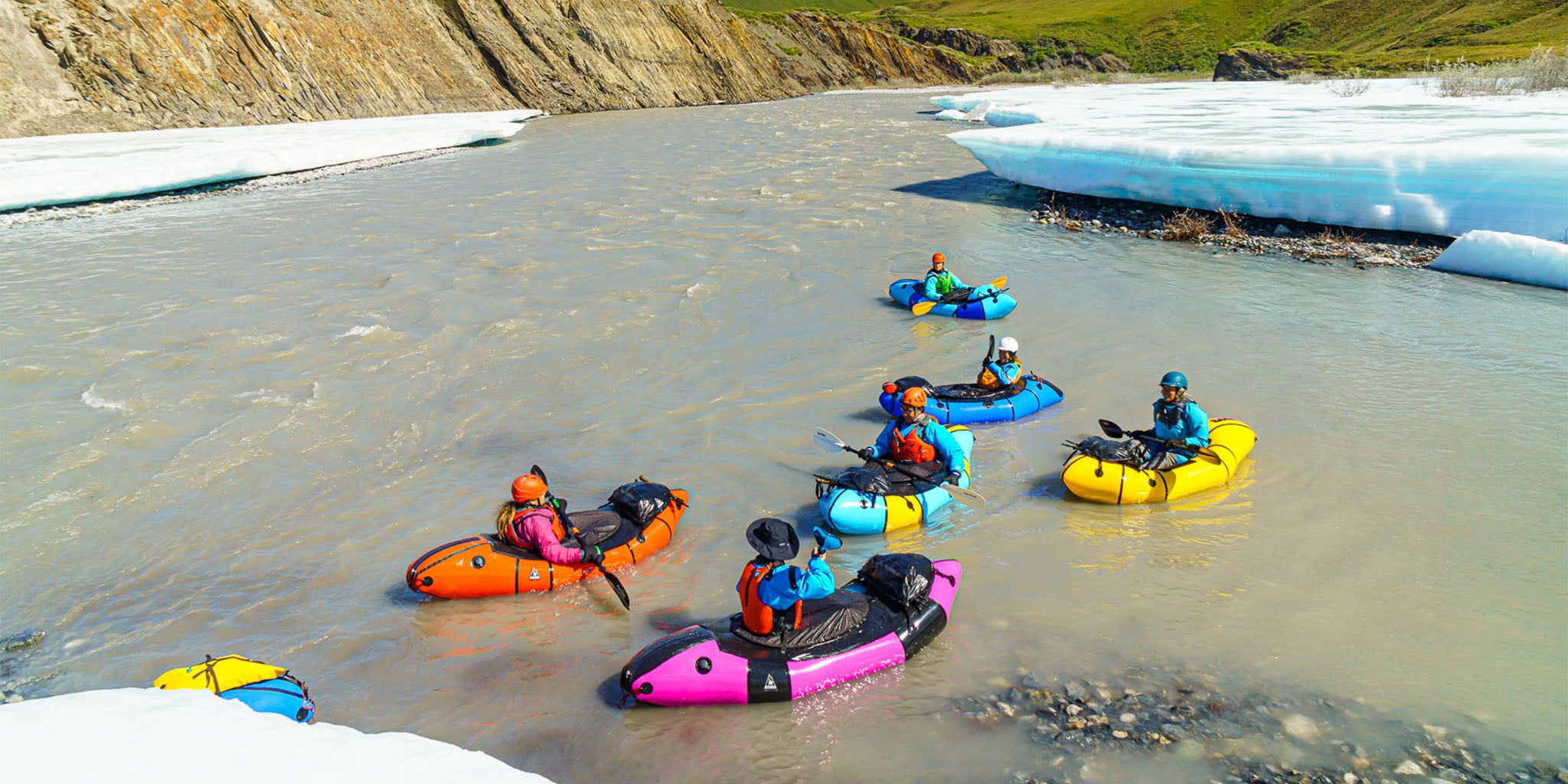
MORE YEARS IN THE BACKCOUNTRY
This is the biggest motivator. You've spent years gaining experience and acquiring judgment. As long as you have the health and means, don't change the trips you do because of your age. Change your gear and go as long as possible. Going ultralight allows me to keep taking a bare-bones, pro-level camera in the backcountry and make images without breaking the body. That, and needing a thicker mattress for quality sleep, means perhaps I will never be a true UL hiker, and that's OK. Again, even a base weight (all your gear before adding food, water, and fuel) that is five pounds less is a lot easier on the body over the long haul.
There are blogs galore that feature "Super Duper" thru hiker gear lists, (like all over The Trailhead here) so I don't want to repeat that here. They are good sources for ideas. We should all know that backcountry adventures are so much more than just gear, and there seems to be too much emphasis on that alone. If you've been hitting the trails for years, you probably have built up good judgment and experience with your age and know better than to take the UL thing too far.
DON'T TAKE IT TOO FAR
I've section hiked all of the Washington Pacific Crest Trail twice, and on both trips, I've seen and talked to UL hikers dangerously close to hypothermia because they underestimated the punishment the Cascades can dish out even in July and August and didn't bring enough layers. Their only strategy to not succumb to hypothermia was to not stop, hiking insane distances until they got off trail and found shelter. I will always take an extra layer and a little extra food to weather out a storm if need be. Even though I'm in good shape for my age, I just don't want to be put in a position where I have to hike nonstop for a long distance to get out of a storm I wasn't prepared for.
Enough blogs. Get out on the trail or river.
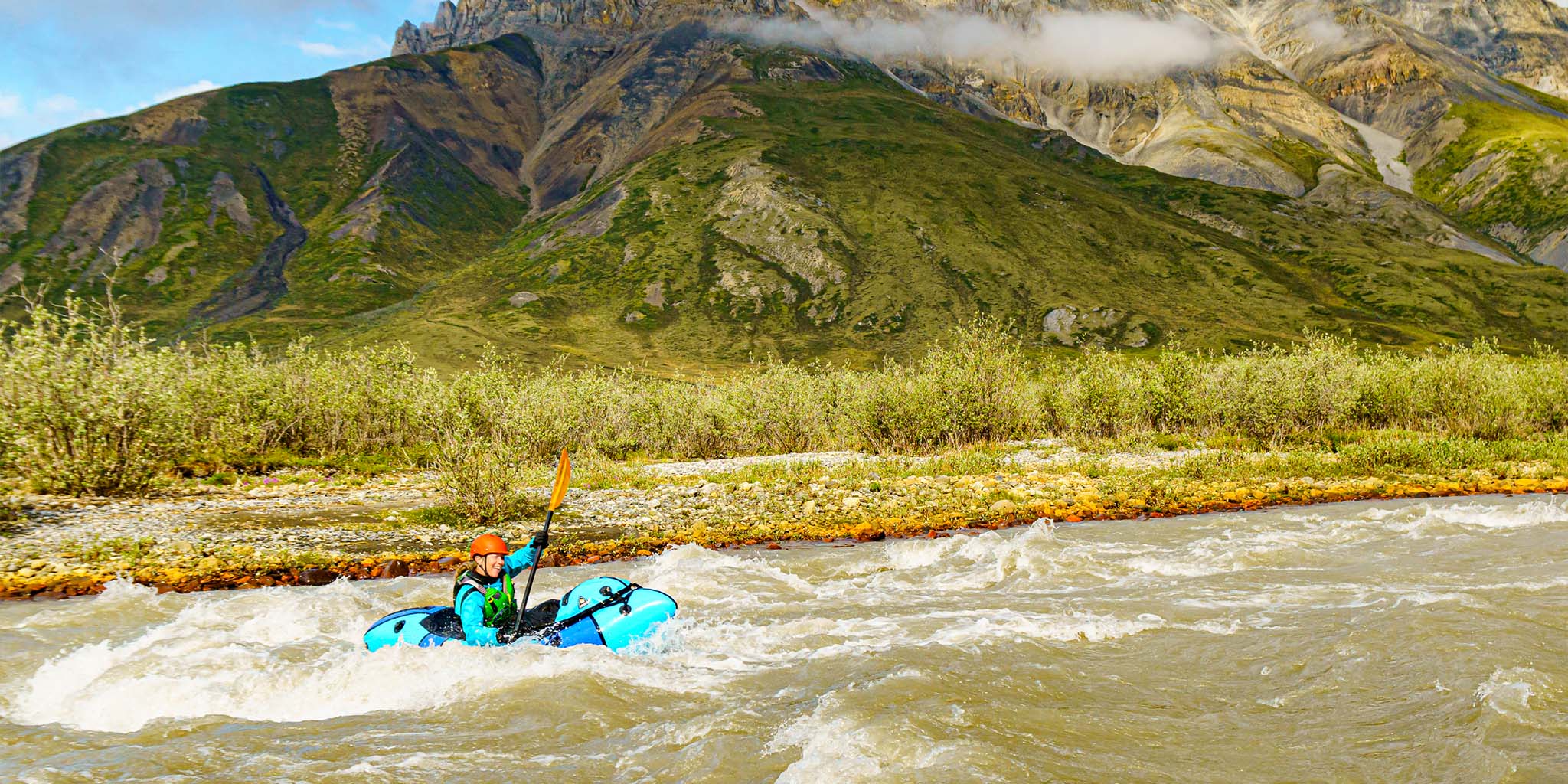
Michael DeYoung is a photographer, a wilderness traveler, and a weather guru who, together with his wife and adventure partner Lauri, has bucked corporate tradition and forged a life as a freelance adventure and travel photographers in the '90s. They have shot campaigns for a wide variety of tourism clients and outdoor publications, including many assignments promoting Alaska as a visitor destination. When not out in the wilderness, they spend their time near Taos, New Mexico, in a 100% solar-powered, sustainable straw bale home and office. Michael has turned more toward leading and guiding photography workshops and uses his meteorological expertise to teach others forecasting for wilderness travel and finding the best photographic light.
Portfolio: michaeldeyoung.com
Stock: mdphoto.com
Photo Tours: Active Photo Tours
Instagram: @michaeldeyoung
Sign up for our Newsletter























